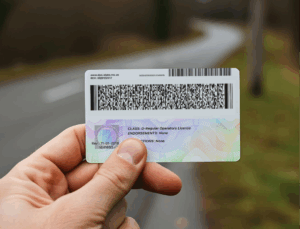We produce enormous amounts of data every day. Consequently, storing, organizing, and accessing information has grown to be a challenging task. Cloud systems are a convenient, flexible, and cost-effective solution.
However, retrieving information from cloud storage can be tricky and time-consuming, especially for unstructured data such as photos or PDFs. Let’s discover how modern technology can fix this issue and streamline workflows.
Optical Character Recognition enables searchable databases
Optical Character Recognition (OCR) can turn raw information into structured data that computers can work with. The technology is not new, but with the rise of cloud computing, it has become widely available and less expensive. Using OCR lets cloud storage systems turn raw files into searchable data, allowing users to rapidly obtain the information they want.
Cloud storage employs OCR technology in a variety of forms. Here are some examples:
1. Document management: Many companies store their documents in cloud systems to facilitate easy access and company-wide collaboration. However, finding a particular bit of information within these databases can be difficult, as not all documents are inherently searchable. Instead, they might be stored as scans, photos, or PDFs.
OCR technology can convert these documents into searchable text, making it easier to locate specific information.
Of course, this feature can also be implemented into consumer-facing cloud applications, enabling private users to retrieve data in the blink of an eye.
2. Invoice & receipt processing: Many businesses receive invoices and receipts on paper or in PDF format, which can take hours to handle manually. OCR technology lets them automate this procedure by extracting data such as the vendor name, invoice date, and amount. This can then be fed directly into an accounting system.
3. Data entry: Every industry has workflows that require data entry into a database or spreadsheet. Manual data entry, however, causes massive workloads – and is error-prone. By extracting data from scans, photos or PDFs, OCR technology helps automate these processes, save labor, and prevent mistakes.
OCR technology is not flawless, and its usefulness does have several limits. For example, handwriting, low-quality scans, and unusual typefaces might cause OCR to fail.
However, with the help of advanced machine learning algorithms, OCR technology has improved significantly. Current systems can recognize text in a variety of forms. Additionally, these algorithms can learn from their mistakes and further improve their recognition capabilities by processing more data.
Conclusion
OCR technology has transformed the way we manage data by efficiently translating paper documents into searchable digital formats. By making saved documents easier to find and access, OCR aids the growth of cloud storage systems.
The accuracy and speed of text recognition have increased substantially as OCR technology has advanced, minimizing the need for manual intervention and increasing productivity.
Looking ahead, we should anticipate OCR technology to become even more powerful and user-friendly. As machine learning and artificial intelligence are integrated, OCR technologies get smarter and better at handling diverse kinds of documents.
As more businesses use cloud storage solutions, OCR technology will be an important facilitator of digital transformation.
Would you like to learn more about Optical Character Recognition? Check out our blog post about the technology behind it.







